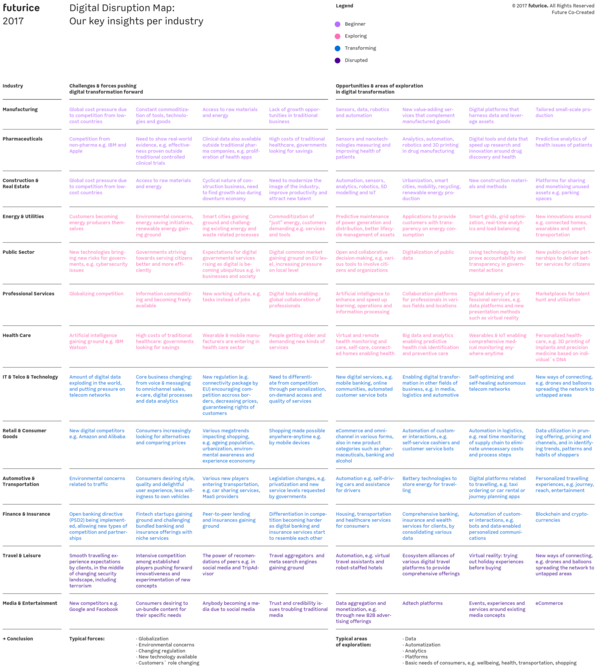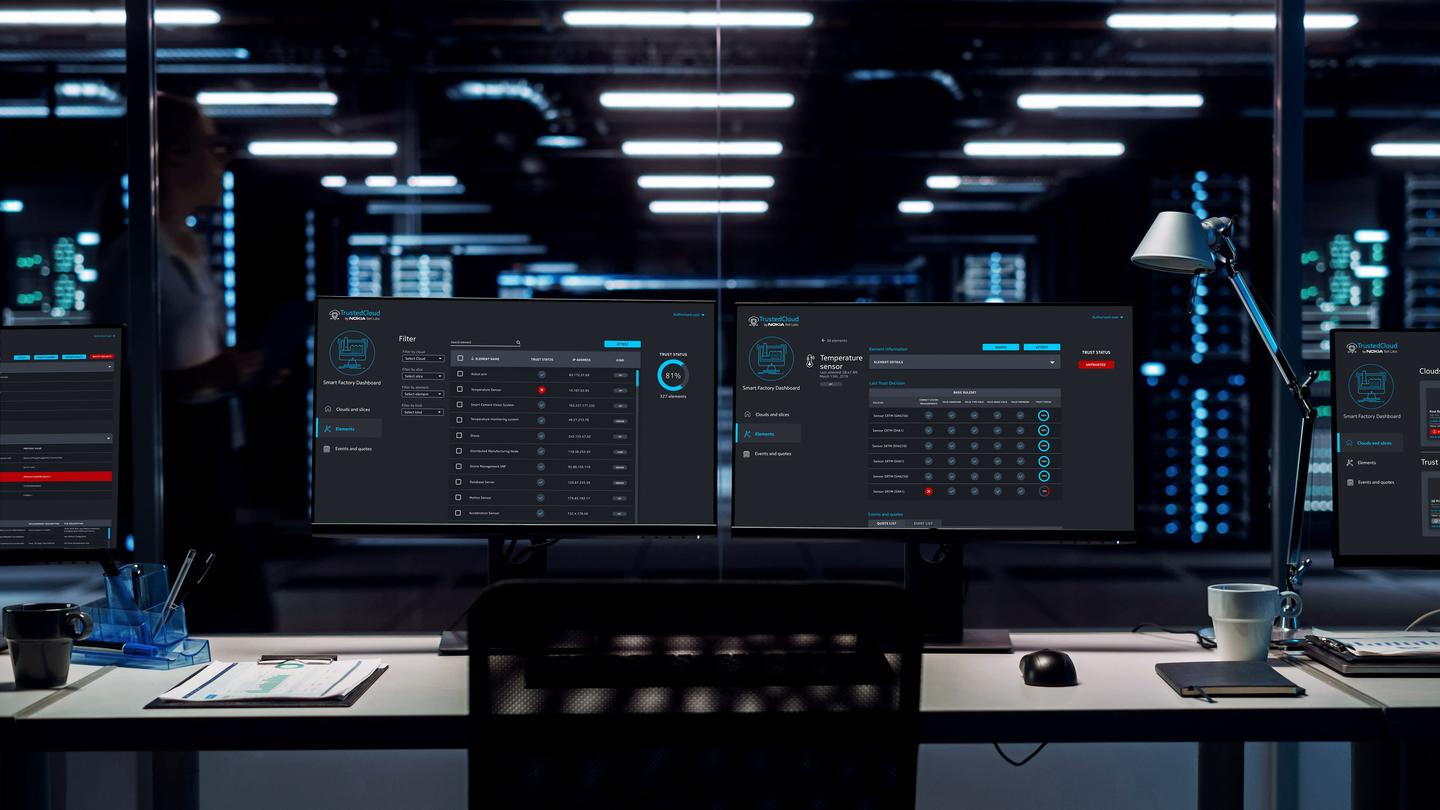 Saddle up for a bumpy digital transformation ride
Saddle up for a bumpy digital transformation ride
Remember when you were a kid and went to an amusement park? Bumper cars were always a major attraction. Everyone, friends and strangers, together, with the freedom to do whatever you please. Some wanted to drive slowly, following others to eventually find their own way. Some other kids were obviously out to cause havoc and crash into others as hard as they could.
Digital transformation today is basically one big bumper car ride. All imaginable industries are there, developing their own digitalization plans and progressing in their own way. Some companies are investing more, some less. Some are following a very traditional path, while others are finding new, disruptive opportunities and challenging the status quo. In other words, crashing into others as hard as they can.
Looking at it across industries, digital transformation seems like a complex or even confusing phenomenon; one that no one has a comprehensive perspective on. There are too many complex technologies being developed and transformation is too dispersed globally, clearly moving ahead in distinct phases and at difference paces. It’s happening fast. That much we know. As with bumper cars, the predictability of the actions and their impact is very low.
Mapping digital transformation on a global and cross-industry level is hard, but we wanted to give it a serious try. Our aim was to review the digitalization of industries, understand what is driving their digital transformation and see what the most viable and common digital initiatives taken and opportunities identified in each industry are. We also categorized industries based on their degree of digitalization: some have clearly taken the hit of disruption already, while others are only beginning to make their digitalization plans and can’t really see the road ahead with as much clarity as they’d like. We wanted to illustrate a complex phenomenon in a simpler and more understandable way, and to identify common denominators, opportunities and challenges.
The result is the first version of the Futurice Digital Disruption Map. It consolidates what we think are the most essential factors in digital transformation right now. See the map here:
 Digital Disruption Map by Mika Ruokonen, Krista Naumanen and Sami Koskela. Click for a full-size version.
Digital Disruption Map by Mika Ruokonen, Krista Naumanen and Sami Koskela. Click for a full-size version.
Creating the map was an enlightening and revealing exercise. It allowed our specialists from different fields to work together to share their thoughts and challenge each other. We found a number of important common denominators that deserve our attention across industries. Most importantly, we identified the following common forces that drive digital disruption everywhere:
- Digital drives the globalization of the competition - national borders have a shrinking impact on business and new players from different countries are entering the game.
- New digital technologies to play with - including increasing computing power, artificial intelligence and virtual reality.
- The environmental concerns of consumers and clients, the need to find alternative solutions that create less waste and consume less energy.
- Changing nature of government regulation - new demands for openness, transparency and ethical practices.
- Customers become active participants in offering development process or service delivery – they play new roles: problem solver, brand ambassador and sometimes critic and sparring partner, too.
We also identified a number of typical opportunities and areas of exploration that are attractive for companies from different industries:
- Companies collect and analyze data in various forms to better understand their customers, value chains, internal processes and competitors, among other things. They are building advanced analytics on top of the data to better steer their business.
- Companies are automating manual work, reducing unnecessary process steps or players in the value chain, and reducing the number of people monitoring the work of machines.
- Companies are shifting their business from asset-focused activities towards technology creation, digital platforms and network orchestration. Many companies wish to become “platforms of X”, “connect supply and demand around Y”, “create an online community for Z to be able to meet”, etc. They wish to emulate the path taken by companies like Uber and Airbnb.
- As a part of their digitalization process, some companies in industries like banking, construction, pharmaceutics and energy start looking for a closer relationship with consumers and an ability to serve their daily needs in areas new areas, such as online shopping, wellbeing, health, transportation or housing.
There are common forces pushing digital transformation forward, presenting opportunities that more or less all companies try to grasp. As a result, the following questions emerged:
- Does it make sense for industries to work in “silos” anymore? Are there opportunities for new cross-industry partnerships? For example; if a company is engaged in the expensive and time-consuming work of developing artificial intelligence applications, could related innovations in one industry be re-used in another? Would a more systemic view of digital transformation help reduce unnecessary investments?
- Is too little cross-industry learning taking place? For example, could companies from industries like media or travel that have already weathered their fair share of disruption teach companies in an industry like manufacturing how to succeed in the ongoing digital transformation? Why reinvent the wheel? The business drivers may differ from one industry to another, but the lessons management can learn may be very similar.
- Are fields like shopping, health, wellbeing and transportation too crowded? The business potential is huge, but are the innovations too traditional and markets already too competitive? Are corporations neglecting some lucrative niche opportunities and inadvertently leaving them for “only” to startups to exploit? Are corporations taking enough radical risks or are too many players chasing the same rabbit down the same hole?
- Will disruptive challenges and price pressures OR growth through grasping great new digital business opportunities become the dominant paradigm? Will digital transformation create or destroy value in a given industry? For example; experiences in the media and travel industries indicate that traditional players destroyed value while transforming their business, but new players like Google, Facebook, Trivago and Momondo created a lot of value… and the biggest winner was the consumer who got more content and services for free. How would a similar future unfold in other industries and who will master the new value creation?
- Will there be an “uber-consolidator”, a company that takes a variety of industry operations “under one roof” and best exploits digital convergence and synergies? Based on history, it seems likely that some industry convergence will take place eventually. Could someone proactively claim the first-mover advantage? Could similar skills apply across industries? For example; Google is already moving beyond the internet and into markets like transportation, wearables and smart cities. Can any traditional corporations do the same and become a conglomerate for the digital age?
While we hope our Digital Disruption helps people grasp digital transformation in its various forms, we are aware of its weaknesses and limitations.
First; the map focuses, by choice, mostly on technological perspectives. Naturally there are human, cultural and societal “meta-level” implications, too: how is the nature of work changing? What new skills and jobs are needed? Which are becoming obsolete? How will governments respond and what will they do to maintain stability in the future?
Second; digital disruption will break industry boundaries. This map focuses on identifying the current state of each industry, but it does not adequately address all the new opportunities offered by industry convergence. Given all the disruptive development, does it make sense to retain existing industry definitions? Or would it make more sense to conclude that, once the transformation is over, completely new industries will exist?___Was this Digital Disruption Map useful? Do you see something in the global digital bumper ride that we missed? How can we improve on our map? We’d love to hear your thoughts and will be updating the map on a regular basis. Your help in doing this is appreciated.
 Mika RuokonenVice President, Helsinki
Mika RuokonenVice President, Helsinki






